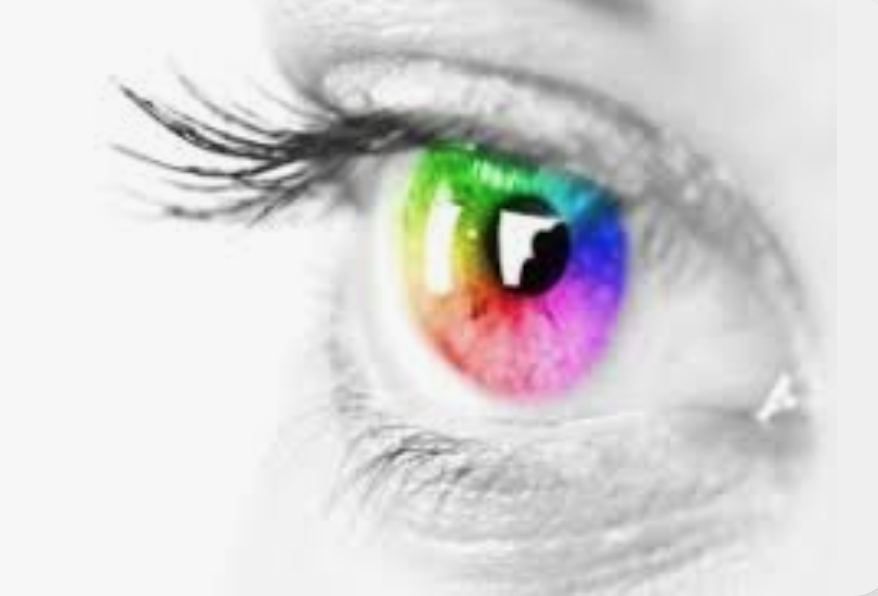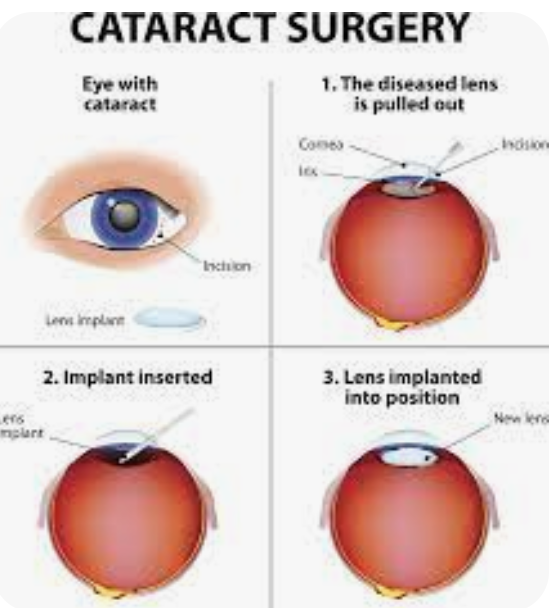The Miracle of Cataract Surgery

There is More Good in the World Than Bad
Brent was upset. His ophthalmologist had just advised him his blurred vision was because of cataracts and he should have them removed.
Even though the doctor had advised Brent that cataract surgery was now routine and covered by his provincial medical plan, he had flashbacks to when his mother, a part-time artist, had hers removed almost 40 years ago.
Back then she was hospitalized for a week, was in considerable pain, and it took several months for her eyes to heal. One of her eyes never did heal properly and after her surgery she was never comfortable driving a car. In spite of colours being more vivid, she lost some of her interest in painting.
Brent had visions of the operation being painful, not working, not being able to drive or read, and even getting around with a white cane.
As he was leaving the office, the doctor’s assistant gave him a booklet to read to reduce his apprehension and said she would call to arrange the date for the operation.
Fast forward 10 months. Brent, dressed in a green hospital gown, and his wife Lucinda were in the waiting room of the eye clinic, waiting for his turn to have his cataracts removed and a new artificial lens installed. Lucinda was doing her best to keep him calm.
Understandably, he was anxious, however, not as anxious as he would have been had he not taken the time to learn about the advances made in cataract treatment since his mother was operated on some 40 years before.
According to a 2017 study by Alcon Canada, a part of the NOVARTIS pharmaceutical group and a global leader in eye care, upwards of 66% of people 65 and over know almost nothing about cataracts. Brent was 69.

The booklet explained that cataracts are the clouding over of the lens in the eye. Generally they are unpreventable, age related and very common. By 65, approximately 25% of 65-year-olds have cataracts. By the age of 80, it rises to 92%. The treatment is to remove the clouded lens and replace the old lens with a new artificial one. The procedure takes about 20 minutes, is painless and very safe
According to Alcon, this procedure has more than a 95% success rate and 93% of those who had cataract surgery would recommend it to others.
Cataract surgery has become the most common surgery performed around the world with an estimated 28 million surgeries done worldwide every year; 350,000 of those are performed in Canada.
Brent also learned years ago many people with cataracts received no treatment and went blind. However, as far back as 1200 B.C. in India, Mesopotamia, Greece and China a procedure was developed called COUCHING. A needle was injected into the eye, dislodging the cataract and moving it out of the visual axis with the needle. The cataract stayed in the eye but was no longer blocking the light. Because there was no antiseptic or antibiotics and conditions were not very sanitary. About 70% went blind.

This method of treatment continued until around 1747, when a French doctor, Jacques Daviel successfully removed the lens. This became the standard treatment – an improvement – but it still had many limitations, including not being treated at all.
Two hundred years later in 1949, a British surgeon, Dr. Harold Ridley developed an artificial lens. This revolutionized cataract treatment.
However, until about 1990, most cataract patients went through what Brent’s mother went through.
About this time the use of ultrasound and lasers were introduced which further revolutionized treatment, bringing procedures to today’s fast and sophisticated level.
Suddenly a nurse appeared, “Are you Brent?” she asked. “Yes I am,” he replied. “Please come this way.” Brent followed her to a bed where his blood pressure was taken, he answered a few questions and was told he was next.
Fifteen minutes later he was on the operating table, the area around the eye was covered and a number of people he could not see standing behind him. An anesthetic was then administered. He felt no pain.
All he sensed was garbled talking behind him and some activity going on around his eye.
Twenty minutes later he was told, “WE ARE FINISHED,” by a quiet-spoken nurse. “Brent you may get out of bed and put on your clothes. Please cover your eye with this patch. After you are dressed stay here for about 10 minutes, you can then walk around and have lunch, but be back here in 2 hours for us to check you out before you can go home.”
“At home, take these drops but no driving or hard physical activity for a week or so. Come back here in two months to have your other eye done.”
Lucinda drove him home and they spent the rest of the day being quiet and relieved he had successfully come through the surgery.
The next morning he woke up. Things seemed different… they were! Everything was brighter. It was if these past few years he had been watching a black and white movie that suddenly had turned into technicolor. Further, he no longer needed glasses to read.A friend had told him that having cataract surgery was like taking an old bulb out of a flashlight and replacing it with a new one. “Not a bad analogy,” he thought.He also thought of a comment made by Col. Baker, the co-founder and former director of the Canadian National Institute for the Blind (CNIB). He believed the biggest achievement since its founding in 1918 was the number of people who had been trained to become ophthalmologists.
Using new technology, those ophthalmologists had developed these amazing new techniques, not only for cataracts, but for other things such as glaucoma and macular degeneration and restored his and millions of other people’s eyesight. It is indeed a miracle and we are so lucky to be living now.

Most costs are covered by provincial medical insurance, making surgery available for rich and poor alike. Some people may be required to pay for some things. For example, those receiving cataract surgery, if they wish to upgrade the quality of their new lens, may be required to pay more for their lens.
Cataracts, of course, are not the only cause of poor eyesight or blindness and the services provided by organizations such as the C.N.I.B. have allowed many with poor or no eyesight to live a normal life. Perhaps you like me can remember blind people, many of them war veterans begging and selling pencils on street corners and outside of Eaton’s and Simpson’s.
Today those who are blind or have poor vision are able to live meaningful and active lives including some sports such as skiing, have more independence and, walk about freely with the help of a cane or a dog.
Till next time,
Chris Snyder
You May Also Like

Getting Along and the Golden Rule
July 31, 2022
Saying Positive and Supportive Things to Others
August 13, 2023